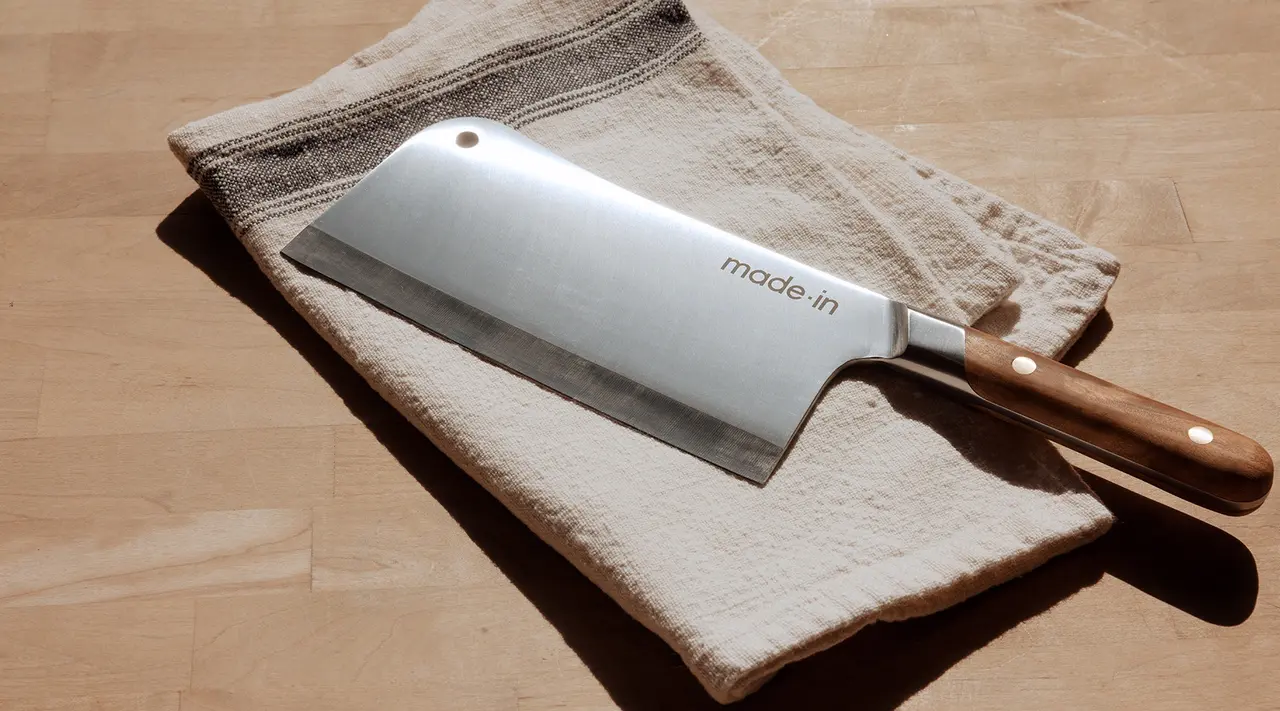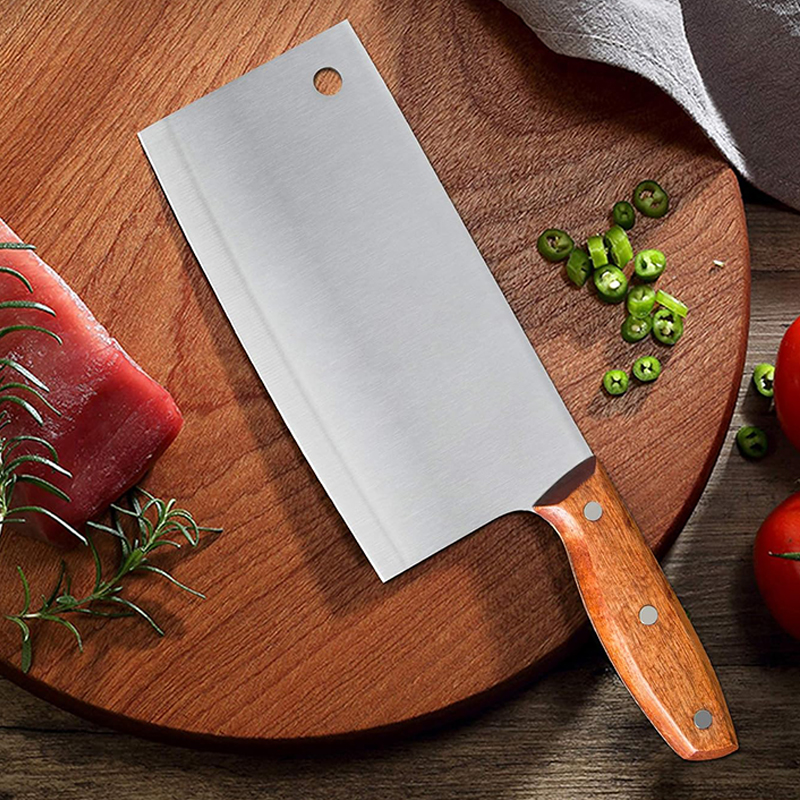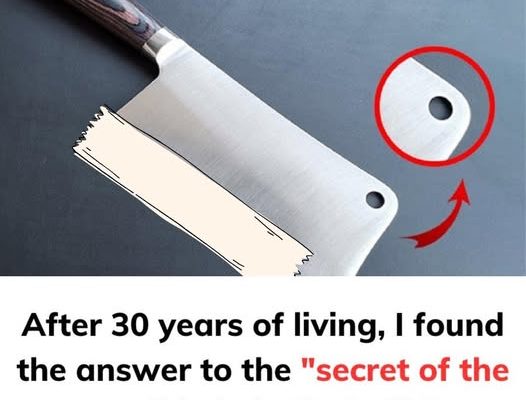The secret of the small hole in the knife
Regardless of a kitchen’s size, a knife is a crucial tool. Interestingly, most kitchen knives feature a small round hole that many people don’t understand. I was once among those who didn’t know its purpose. After some research, here’s what I found.

From a physical perspective, the round hole in a knife is primarily designed to “absorb shock.” When using a knife to cut meat or bones, it encounters significant impact forces. Without a way to disperse this pressure, the blade could easily break, and handling the knife would become difficult. This small round hole helps distribute the force evenly across the knife, thus enhancing its durability and making it easier to use.
Beyond this primary function, the round hole in a knife offers several other practical uses. Once you discover them, you might find that many daily tasks become much simpler.

1. Storage and Drainage
After washing kitchen knives to remove grease and stains, water residue can remain on the blade. If placed directly on a wooden cutting board, the moisture could lead to mold. Moreover, prolonged exposure to moisture increases the risk of rusting.
Here, the round hole proves useful for hanging the knife, facilitating quick water drainage, and preventing rust. Hanging the knife also contributes to a cleaner, more organized kitchen.
2. Removing Snail Tails
Snails are a delicacy, but many people prefer to cook fresh snails at home due to hygiene concerns. Removing snail tails, however, can be challenging. While some use scissors, this method is time-consuming, laborious, and can result in hand injuries.
The round hole in the knife offers a safer and easier solution. Simply insert the snail tail into the hole and use another knife to knock off the exposed tail, making the process effortless.




